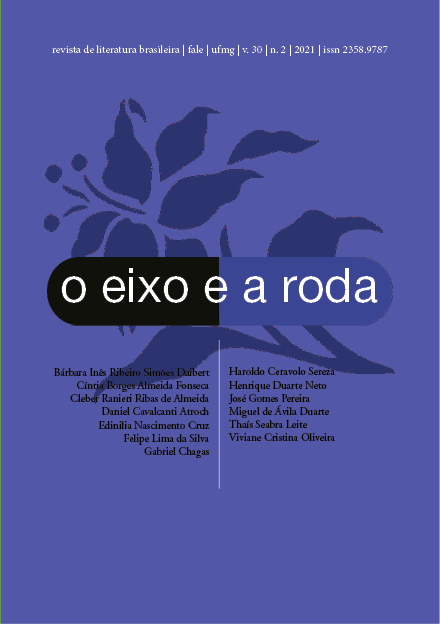An Analysis About the Subjectivity of the “I” in the Metaphors of Color in Work The Brown Boy, by Ziraldo
DOI:
https://doi.org/10.17851/2358-9787.30.2.54-75Keywords:
prejudice, identity, children, colors, humanizationAbstract
This work develops a critical approach to the literary work The Brown Boy, by the writer Ziraldo. First published in 1986, the book featured as protagonist the brown boy, who ended up knowing and befriending the so-called pink boy. This work described the details of this friendship, in the face of personal curiosities, differences, human values and racial issues. The context of doubt favored, to each of the two boys, the construction of their own identities. This construction can be described under three levels: observation, comparison and relationship. The characters observed themselves, compared their differences and were able to establish a relationship of friendship, discovering traces of humanity, respect and harmonious coexistence in ethnic-racial diversities. Considering that the author has developed a figurative language, the purpose of this research is to analyze the metaphors of color, which allow to level and typify the subjectivity marks of the “I”. An ever-expanding “I”, around you, and from the perspective of the other. For this, the concepts of identity and otherness of Zilá Bernd (1987, 1988) and the postcolonial studies of Frantz Fanon (2008) will be used within a theoretical-methodological framework. Therefore, Ziraldo’s The Brown Boy is an interesting pedagogical instrument of children’s literature to be developed in the classroom, because it disarms the pre-established expectation by European culture, of white prevailing over black, and presents new relations of resignification of the world from the vision of two children.
Downloads
References
BARROS, Diana Luz Pessoa de. Teoria semiótica do texto. 4. ed. São Paulo: Ática, 1999.
BERND, Zilá. Introdução à literatura negra. Porto Alegre: Mercado Aberto, 1988.
BERND, Zilá. Negritude e literatura na América Latina. Porto Alegre: Mercado Aberto, 1987.
COELHO, Nelly Novaes. Literatura infantil: teoria, análise, didática. São Paulo: Ática, 1997.
DEFOE, Defoe. Robinson Crusoé. Tradução de Domingos Demasi. Rio de Janeiro: Record, 2004.
FANON, Frantz. Pele negra, máscaras brancas. Tradução de Renato da Silveira. Salvador: EDUFBA, 2008. DOI: https://doi.org/10.7476/9788523212148.
FOUCAULT, Michel. História da sexualidade I: a vontade de saber. 13. ed. Rio de Janeiro: Graal, 1999.
KRESS, Gunther; VAN LEEUWEN, Theo. Reading images: the grammar of the visual design. Oxon: Routledge, 2006.
NEWTON, Isaac. Opticks or a treatise of the reflections, refractions, inflections and colours of light. New York: Dover, 1952.
SANTOS, Francisco Roberto da Silva; SOUZA, Maria Medianeira de. A construção da realidade em imagens de editoriais: um olhar sobre o sistema da modalidade. In: ALMEIDA, Danielle Barbosa Lins de (Org.). Novas perspectivas em análise visual: do texto ao contexto. Campinas: Mercado de Letras, 2016. p. 39-54.
SILVA, Cibelle Celestino. A teoria das cores de Newton: um estudo crítico do Livro I do Opticks. 1996. 132 f. Dissertação (Mestrado em Física) – Instituto de Física “Gleb Wataghin”, Universidade Estadual de Campinas, Campinas, 1996. Disponível em: http://repositorio.unicamp.br/jspui/bitstream/REPOSIP/277093/1/Silva_CibelleCelestino_M.pdf. Acesso em: 30 mar. 2021.
SOLÉ, Isabel. Estratégias de leitura. Tradução de Cláudia Schilling. 6. ed. Porto Alegre: ArtMed, 1998.
TODOROV, Tzvetan. Simbolismo e interpretação. Tradução de Nícia Adan Bonatti. São Paulo: Editora Unesp, 2014.
ZIRALDO. O menino marrom. 2. ed. São Paulo: Editora Melhoramentos, 2013.




 Esta obra está licenciada com uma Licença
Esta obra está licenciada com uma Licença 